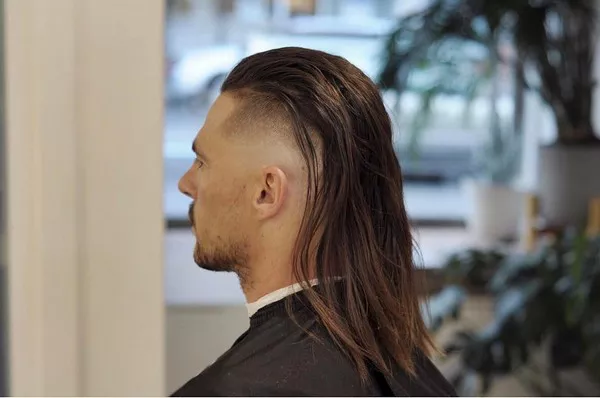Long, healthy hair is often associated with vitality and style, and for many men, achieving longer locks is a desirable goal. In this comprehensive guide, we delve into the various factors that contribute to hair growth and provide actionable tips on how to make your hair grow longer, fostering a journey toward a flourishing mane.
Understanding the Hair Growth Cycle: Foundations for Success
Before embarking on the quest for longer hair, it’s crucial to comprehend the hair growth cycle:
Anagen Phase: The active growth phase where hair follicles produce new hair.
Catagen Phase: A transitional phase where hair growth slows down.
Telogen Phase: The resting phase before hair sheds and the cycle restarts.
Maintaining a Healthy Scalp: The Foundation for Hair Growth
Regular Cleansing: A Clean Slate for Growth
Gentle Shampooing:
Regular cleansing helps maintain a healthy scalp, creating an optimal environment for hair growth.
Choose sulfate-free, nourishing shampoos to avoid stripping the scalp of natural oils.
Scalp Massage:
Gentle scalp massages stimulate blood circulation, promoting nutrient delivery to the hair follicles.
Incorporate a few minutes of massaging during shampooing to enhance the efficacy of the cleansing routine.
Conditioning for Hydration: Nourishing the Strands
Moisturizing Conditioners:
Hydrated hair is less prone to breakage and split ends, supporting overall length retention.
Use a quality conditioner to replenish moisture, focusing on the ends where hair is older and more prone to dryness.
Deep Conditioning Treatments:
Periodic deep conditioning treatments provide intensive moisture, addressing dryness and promoting elasticity.
Tailor treatments to hair type, incorporating ingredients like argan oil or keratin for added nourishment.
Diet and Nutrition: Fueling Hair Growth from Within
Protein-Rich Diet: Building Blocks for Stronger Hair
Lean Proteins:
Hair is primarily composed of protein, making a protein-rich diet essential for growth.
Include lean meats, fish, eggs, and plant-based protein sources like legumes to support hair strength.
Supplements if Necessary:
If dietary protein intake is insufficient, consider supplements like biotin, known for promoting hair growth.
Consult with a healthcare professional before incorporating supplements into your routine.
Vitamins and Minerals: Essential Nutrients for Healthy Hair
Vitamin A for Sebum Production:
Vitamin A supports sebum production, preventing dry scalp and promoting healthy hair growth.
Incorporate foods rich in vitamin A, such as sweet potatoes and spinach, into your diet.
Vitamin E for Scalp Health:
Vitamin E contributes to scalp health, supporting an environment conducive to hair growth.
Nuts, seeds, and leafy greens are excellent sources of vitamin E.
Iron and Zinc for Follicle Health:
Iron and zinc play crucial roles in maintaining healthy hair follicles.
Include iron-rich foods like lean meats and zinc-rich foods like pumpkin seeds in your diet.
Styling Practices: Minimizing Damage and Breakage
Gentle Hair Handling: Towel Drying and Brushing Techniques
Patting Dry Instead of Rubbing:
Patting hair dry with a microfiber towel minimizes friction and reduces breakage.
Vigorous rubbing with a towel can lead to hair damage and split ends.
Wide-Toothed Combs:
Use wide-toothed combs to detangle wet hair gently, starting from the ends and working your way up.
This minimizes stress on the hair shaft, preventing breakage.
Heat Styling Moderation: Limiting Exposure to Hot Tools
Using Heat Protectants:
When heat styling is necessary, apply a heat protectant to shield hair from the damaging effects of high temperatures.
Opt for low or medium-heat settings to minimize the risk of heat-related damage.
Periodic Heat-Free Styles:
Embrace heat-free styles like braids, twists, or buns to give hair a break from styling tools.
This helps prevent excessive heat-induced stress on the hair.
Regular Trims: A Key to Long-Term Growth
Preventing Split Ends: The Importance of Trimming
Trimming for Healthy Ends:
Regular trims prevent split ends, which can lead to further damage if left unaddressed.
Schedule trims every 8-12 weeks to maintain healthy ends and promote overall hair health.
Avoiding Excessive Length Removal:
Communicate with your stylist to ensure they understand your goal of growing longer hair.
Request minimal length removal during trims, focusing on the removal of damaged ends.
Lifestyle Considerations: A Holistic Approach to Hair Health
Stress Management: Impact on Hair Growth
Cortisol and Hair Loss:
Chronic stress can contribute to elevated cortisol levels, potentially leading to hair loss.
Incorporate stress management techniques such as meditation, exercise, or hobbies into your routine.
Adequate Sleep: Supporting Overall Well-Being
Hair Growth During Sleep:
Hair growth is often more active during sleep, making adequate rest crucial for optimal growth.
Aim for 7-9 hours of quality sleep each night to support overall well-being.
Conclusion: Nurturing the Journey to Long, Healthy Hair
In conclusion, achieving longer hair for men involves a holistic approach encompassing scalp health, nutrition, styling practices, and lifestyle considerations. By understanding the nuances of the hair growth cycle and implementing tailored strategies, individuals can foster an environment conducive to longer, healthier locks. Consistent care, a balanced diet, and mindful styling practices contribute to the overall well-being of the hair, transforming the quest for longer hair into a rewarding journey of self-care and confidence.

